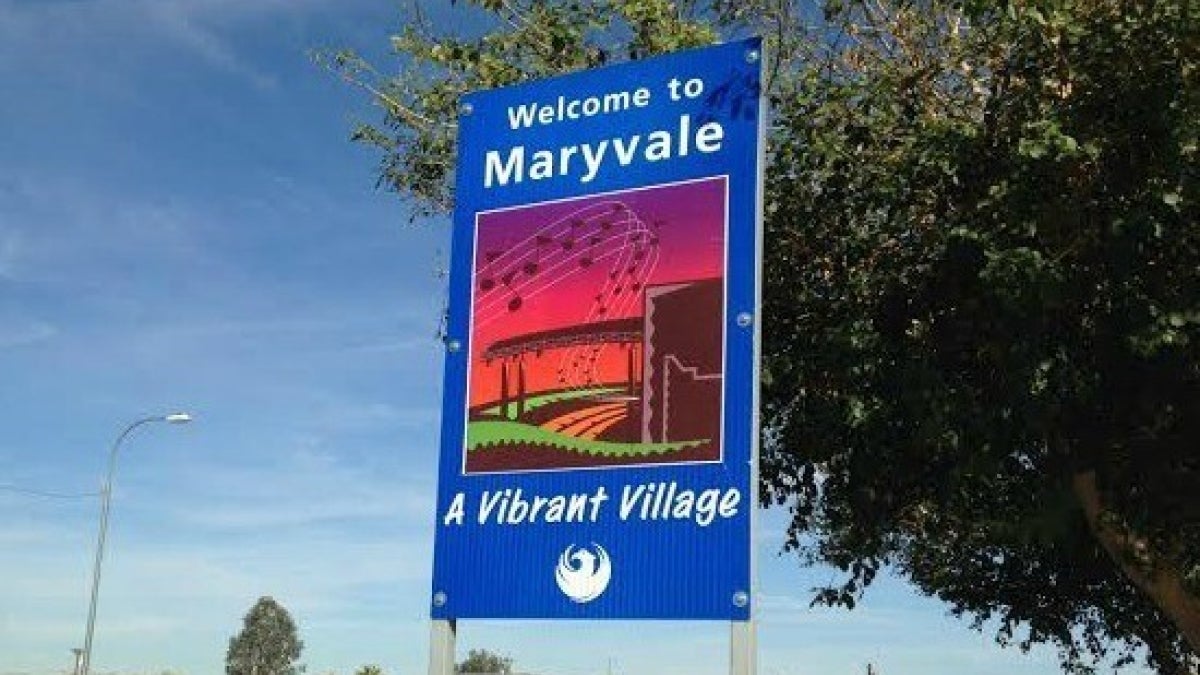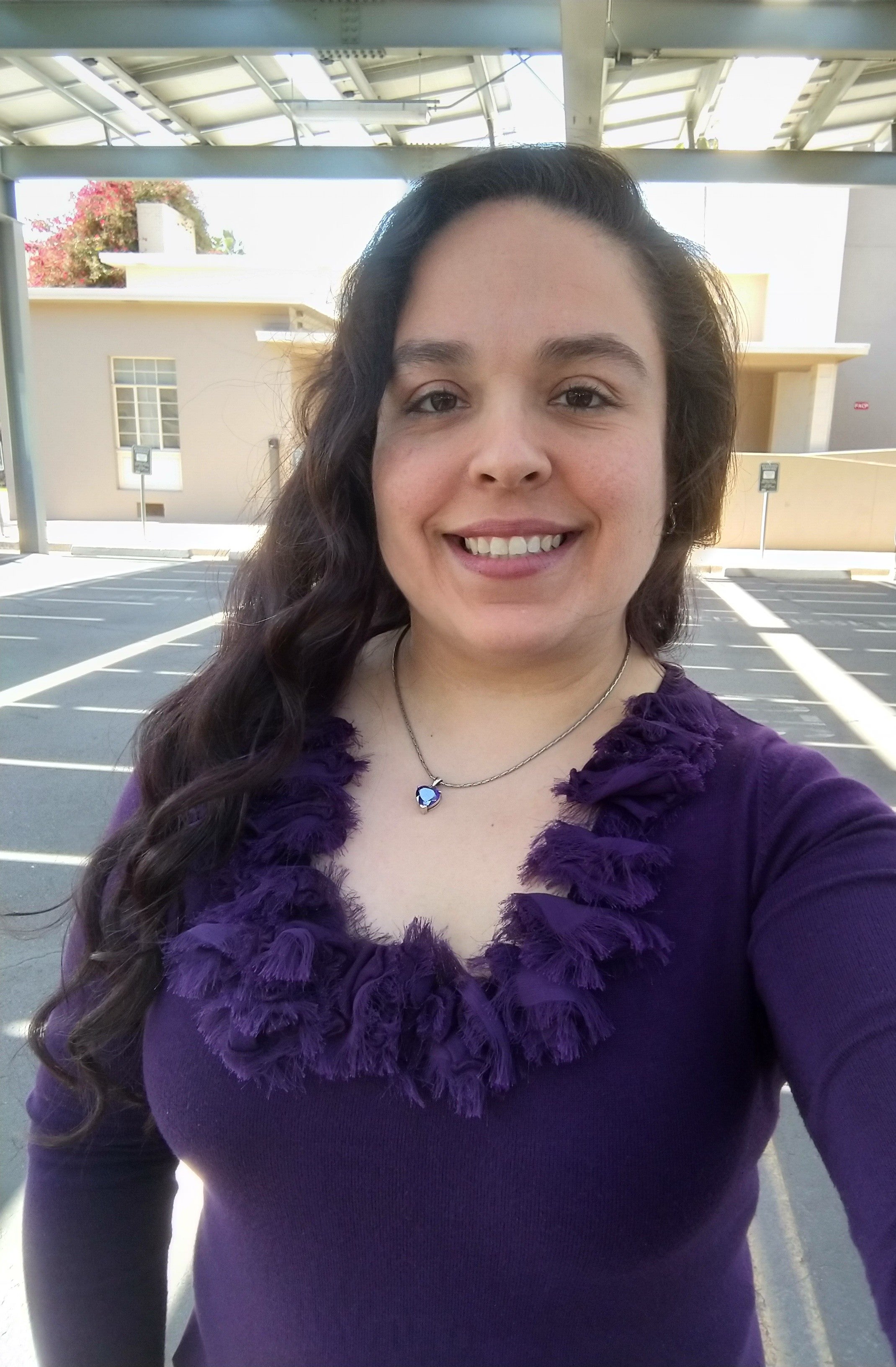Maryvale Community History project documents neighborhood stories

A colorful sign welcomes visitors to the Maryvale neighborhood in west Phoenix. Photo courtesy Watts College of Public Service and Community Solutions.
Shelly Smith-Phillips, a native of the Maryvale neighborhood in southwest Phoenix, believes it’s important that the narrative of her hometown be changed from negative to positive through the stories of area residents.
That’s one reason why she joined the Maryvale Community History project, a partnership with Barrett, The Honors College, and the Watts College of Public Service and Community Solutions at Arizona State University.
Smith-Phillips, who completed a bachelor’s degree in English and secondary education with honors from Barrett last December, was among the first cohort of students to participate in the project through a course offered by the honors college in 2020.
The project trains honors students how to interview Maryvale residents and document the area’s history through their recollections, said Katherine O’Flaherty, a Barrett Honors Faculty Fellow who teaches the course.
Support for the project comes from the Watts College, which is named after Mike and Cindy Watts, co-founders of Sunstate Equipment Co. and longtime Maryvale residents.
Maryvale is a master-planned community on the southwest side of Phoenix that took shape in the 1950s when developer John F. Long aimed to create a suburb with affordable homes and space for parks, schools and community services. Over the years, the community fell on hard times, with increasing crime and blight.
For Smith-Phillips it was home for 27 years. Her mother still owns the house Smith-Phillips grew up in, and close friends still live in the neighborhood.
“I know there’s a lot of negative connotation about Maryvale, but there’s a lot of pride there, too,” Smith-Phillips said.
Smith-Phillips’ undergraduate honors thesis, “The Community of Maryvale, the Outside World’s Perception and How to Change It for the Better: One Woman’s Perspective of Then, Now and Tomorrow,” focused on her work on the Maryvale Community History project and the histories she documented.
Shelly Smith-Phillips, a Maryvale native, participated in the Maryvale Community History project because she wanted to uncover positive stories about the southwest Phoenix neighborhood where she grew up in. Photo courtesy Shelly Smith-Phillips
“I hope that this project will show outsiders that Maryvale is full of loving, caring, hard-working people; that good things do come out of the places that you might least expect them to. I believe that participants are proud to share their stories and show their love of their community. I hope that they will gain confidence in the world around them that Maryvale has not been forgotten,” Smith-Phillips said.
“Through my involvement with the Maryvale Community History project, I have learned how to conduct interviews and document people's histories. I have learned how important a person's story is to their community and how their story can bring life to a community. Additionally, I have learned that people who share something as simple as a location can join together and share a passion and sense of pride for their community,” she added.
Two Maryvale residents interviewed for the project said they enjoyed the chance to contribute memories of their community toward something permanent.
Britney Colorado, 20, is a junior at Grand Canyon University, where she is studying criminal justice and psychology. She has lived in Maryvale for more than 10 years.
“I want people to know that despite some of the bad things that come to mind when you come to Maryvale, there are good things,” Colorado said. “We might not know everyone here, but I consider them like family in a way.”
She said she remembers happy times participating in ballet at the Maryvale Community Center, where she met many of her friends.
“We had theater shows, ballet shows. I met a lot of people I’m still friends with today,” Colorado said. “That part of my childhood is very special.”
She said she was active in sports and extracurricular activities at her neighborhood school, and her family and friends spent free time at the community pool and the city branch library.
“There’s a large Hispanic population here. I’m from Mexico; it feels a little like a tight-knit community,” she said. “I don’t feel out of place like other cities.”
Maryvale is home to many small businesses, and the community center offers a variety of activities and sports for young people, she said — signs that things are looking up.
“I’ve seen a lot of schools built here. We have seen at least two new schools in the area, probably more,” she said. “They’re finally fixing the roads. I feel like there have been a lot of improvements in the whole Maryvale community.”
Rosie Espinoza, 36, who lives in Maryvale and works for a local school district, assisted her father, Martin, 70, a longtime Maryvale resident, as he offered recollections for the project.
“I enjoyed hearing his remembrances, and I knew they would be a lot different from mine. I really love to see and hear perspectives as it relates to generations, current climate and times/issues going on,” Espinoza said.
“What I thought was neat and stood out as far as remembrances from my father’s perspective is his journey to becoming and being a Maryvale resident.”
Martin Espinoza was born in Miami, Arizona, to immigrant parents. His father worked in the copper mine there. A few years later, the family settled in south Phoenix.
After serving in the Navy, Martin lived in California, where he met Rosie’s mother. They married and returned to Arizona, where they rented a home in south Phoenix, saving money to buy a home in Maryvale. At the time, Maryvale was a predominantly white, middle-class community where Latinos such as her parents were in the minority. Martin Espinoza started working for the city of Phoenix.
Rosie Espinoza said she is happy to know these recollections will be available to people in the future, because stories like her father’s are authentic descriptions of the making of a community, which has since transitioned into being predominantly Latino.
“I think it is really important to do interviews like this and document answers like this, because although data, research and statistics are important, they cannot paint a picture like hearing from the community or people that lived through that research and data,” she said.
Rosie Espinoza said she loved studying the history of Maryvale and what it was like when she was born in 1985.
“Now, 36 years later, I love sharing my experience and stories of Maryvale with the youth and seeing their eyes widen and mouths drop to learn what I learned, and what it was like for me, and how much it has changed since I was a kid,” she said. “I believe it is important through not only interviews, but through photos, art, video and music, to document and tell stories of communities so that they are not lost and can be built upon.”
O’Flaherty said the Maryvale Community History seminar-style course will be offered again in spring Session B, starting in March. Students have until March 14 to register.
Students will learn how to engage with the city of Phoenix, specifically the Maryvale neighborhood, and develop historical research and interviewing skills.
“Collecting these stories engages (Maryvale) neighborhood members, builds a sense of community and documents the history of a significant area of Phoenix,” O’Flaherty said.
Story written by Nicole Greason, director of marketing and public relations for Barrett, The Honors College, and Mark J. Scarp, media relations officer for the Watts College of Public Service and Community Solutions.


